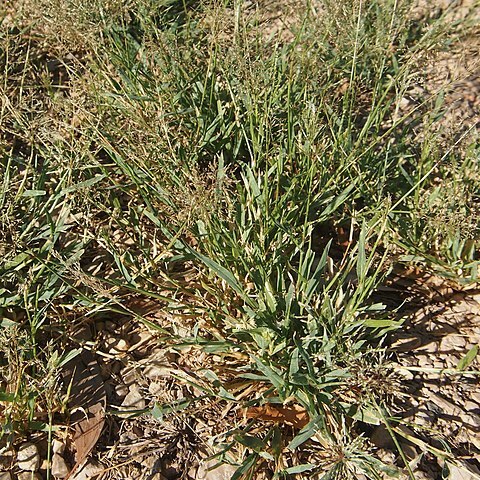Ephemerals, slender, erect, caespitose. Flowering culms to 35 cm high. Leaves: basal leaf sheath margins ciliate; ligule a fringe of hairs, to 0.8 mm long; blade flat, linear, 3–6 cm long, 4–8 mm wide, basally subcordate, with tuberculate margins. Inflorescences paniculate, irregular, open, 5–13 cm long; primary branches whorled at the lowermost panicle node and at all branches except terminally, equalling or longer than adjacent internodes, spreading, spikelet-bearing throughout, with spikelets loosely spaced and fairly even. Spikelets pedicellate, to 1.4 mm long; pedicel to 0.8 mm long. Glumes: lower glume ovate (strongly convex on back), to 0.7 mm long, acute, 1-nerved; upper glume lanceolate, ±equalling spikelet, to 1.4 mm long. Lemma ovate (broader than upper glume), 1.1–1.4 mm long, obtuse, 1-nerved. Palea subequal to lemma, emarginate into 2 subacute parts. Anthers 3, to 0.2 mm long. Grain ovate, terete to subterete (globose), to 0.6 mm long, to 0.5 mm wide, to 0.4 mm thick, smooth or wrinkled, golden. Embryo ±half as long as grain.
More
A small grass which grows over one or two years. It grows 10-40 cm high. It forms dense tufts at the base. The leaves are broad. There are short bristles along the edge. They are heart shaped at the base. The flowering stalk has a loose panicle. It is a pyramid shape. The grains are round. They are 1 mm across.

